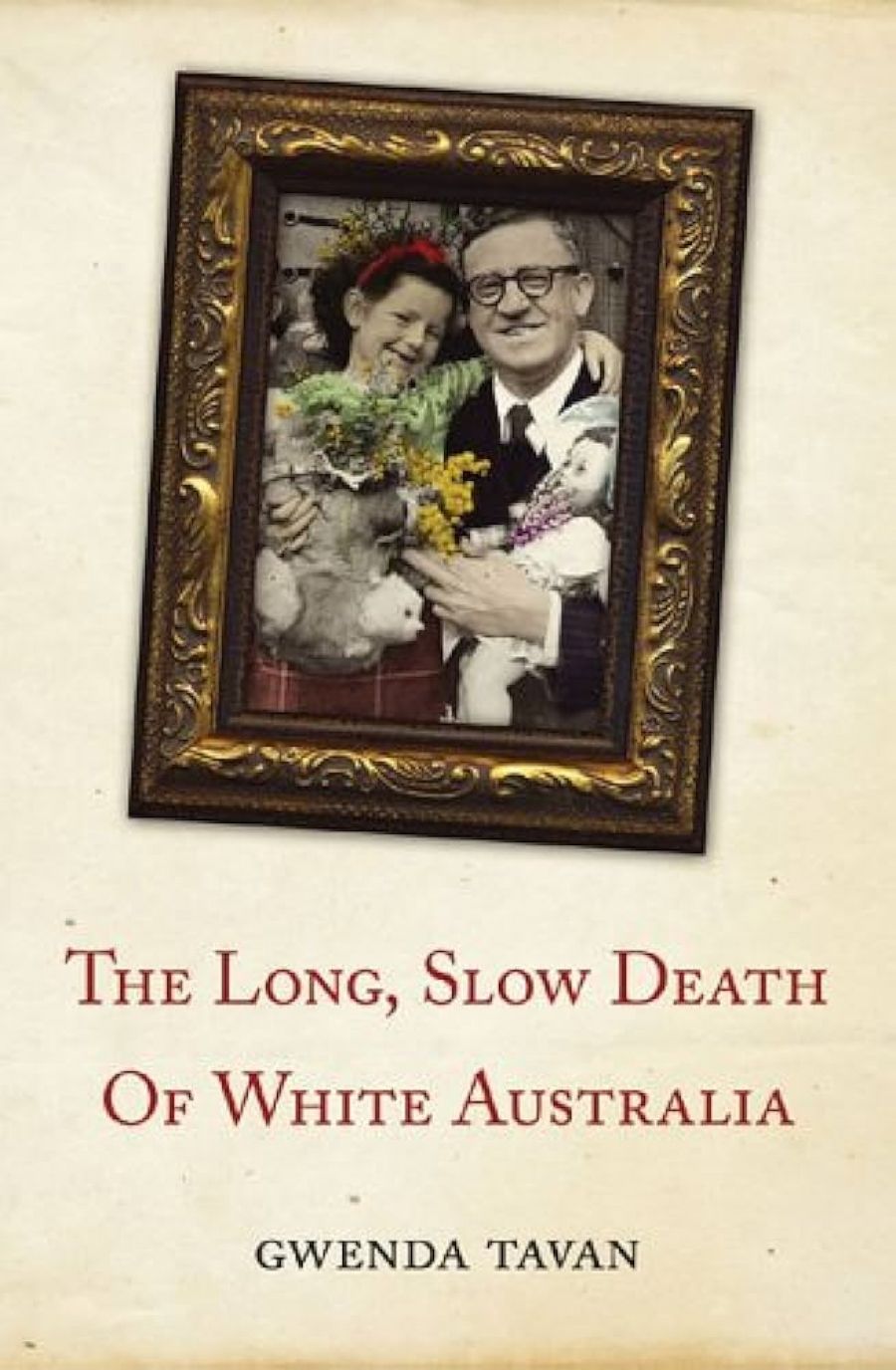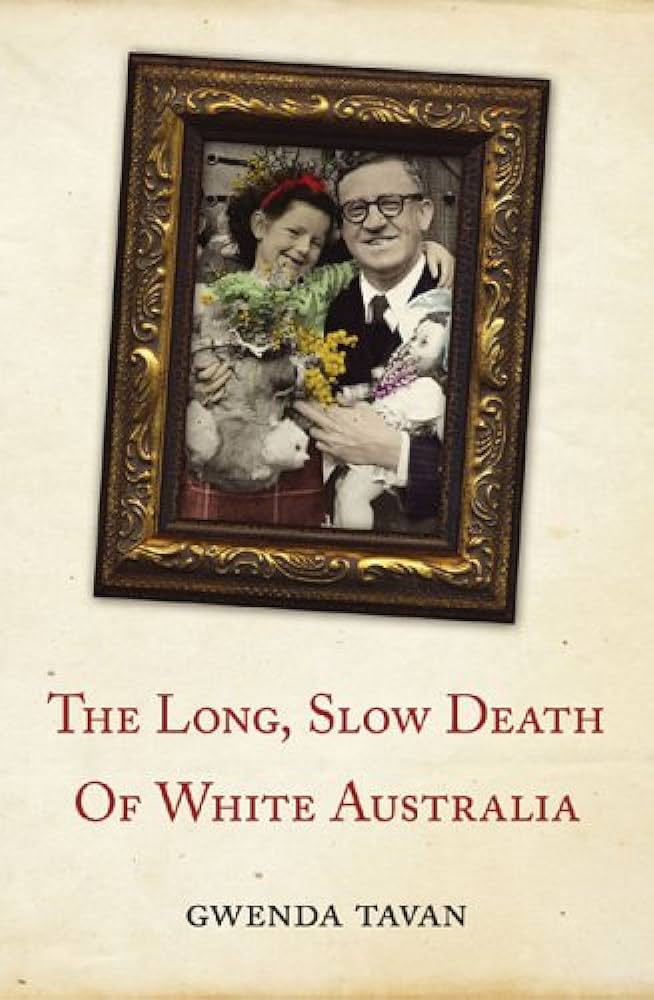
- Free Article: No
- Contents Category: Australian History
- Review Article: Yes
- Article Title: Black as ebony
- Online Only: No
- Custom Highlight Text:
‘Little more than a hundred years ago,’ Alfred Deakin wrote in 1901, ‘Australia was a Dark Continent [without] a white man within its borders. Its sparse native population was black as ebony. There are now some sixty thousand of their descendants remaining and about eighty thousand coloured aliens added. In another century,’ he confidently predicted, ‘Australia will be a White Continent with not a black or even dark skin among its inhabitants.’ Deakin was, of course, celebrating the White Australia Policy, not only as embodied in the Immigration Restriction and Pacific Island Labourers Acts (designed, respectively, to prohibit Asian immigration and to expel the Melanesians indentured to work in tropical agriculture) but also as expressed in widespread complacence with the disappearance of the indigenous Australians.
- Book 1 Title: The Long, Slow Death of White Australia
- Book 1 Biblio: Scribe, $32.95 pb, 298 pp
- Book 1 Cover Small (400 x 600):

- Book 1 Cover (800 x 1200):

The literature of the origins and implementation of the White Australia Policy is large. Not so that of its demise. Gwenda Tavan’s scholarship is impressive, and her argument is original and valuable, building on and extending substantial work by scholars such as James Jupp and Sean Brawley.
Readers acquainted with Jupp’s fine short overview of Australian immigration history (From White Australia to Woomera, 2002) will be aware of the gradual relaxation of restrictions on the entry of non-Europeans under the Menzies and Holt Liberal governments. Appalled by Labor Immigration Minister Arthur Calwell’s expulsion of Asians evacuated to Australia during the Pacific War, which by its inhumanity threw the world spotlight on the White Australia Policy, Liberal ministers quietly allowed wartime refugees to remain, permitted a number of the expelled to return to their families and abolished the ban on Japanese war brides. In 1956–57, entry was liberalised for ‘distinguished’ and ‘highly qualified’ Asians; in 1958 the Migration Act abolished the offensive ‘dictation test’. Further liberalisation had to await Menzies’ retirement in 1966. As Tavan points out, the changes to citizenship and residence status at last gave non-Europeans social and political parity with European immigrants. Numbers of Asian admissions were so small, and the contrast with massive assisted British and European migration so great, however, that the White Australia Policy cannot be said to have been abandoned. The most decisive blows came in 1966–73, with the acknowledgment that educational and occupational skills, and not race, were to be employed as criteria for admission. After a bitter internal struggle in the 1960s, the Labor Party disavowed ‘White Australia’, and in 1973 the Whitlam government declared the policy dead and buried.
The international context was brilliantly explored by Sean Brawley in his comparative study The White Peril: Foreign Relations and Asian Immigration to Australasia and North America 1919–1978 (1995). Whereas Australia regarded the Pacific War of 1941–45 as a struggle for the maintenance of a white British Australia, throughout Asia the conflict was seen as ushering in a period of racial equality and freer immigration. In the Empire, remote Canada and ocean-isolated New Zealand could be indifferent to such expectations, but Australia had to adapt its ‘populate or perish’ obsession to the new realities. The avoidance of embarrassing deportations, official obfuscation and cosmetic change to policy could work for a time, but ultimately Australia had to join New Zealand, Canada and the US in acknowledging that friendly foreign relations were more important than maintaining racially restrictive immigration policies.
Tavan focuses intensively on the domestic scene. Her main aim is to discredit claims that the demolition of the White Australia Policy came as the result of an élite conspiracy, or that the Australian people were hoodwinked by politicians and public servants who secretly undermined the democratically endorsed preference for a racially exclusive Australia. These claims have been circulating for decades, antedating Geoffrey Blainey’s claims about Asianisation by stealth in 1984, but since repeated by academics such as Katherine Betts and avowed anti-Asian immigration campaigner Graeme Campbell, and even loosely echoed, in relation to the policy changes of the 1960s, by well-respected writers such as Jamie Mackie and Paul Kelly. Tavan avers that ‘if the assertions are correct there was no fundamental change of attitude towards non-Europeans by the early 1970s, and resentment has been growing ever since. The roots of continuing sensitivity about various immigration issues lie, in essence, in the nature of the abolition of White Australia, which removed racial discrimination and fear of the foreigner from the statutes but not from the hearts and minds of everyday people.’
Tavan’s thorough investigation of policy changes, of the tensions between the Departments of Immigration and Foreign Affairs, of the timidity of some politicians and the courage of others, and of the course of public opinion as revealed in the polls, effectively discredits the charge of an élite conspiracy. The reluctance to announce policy changes in the 1950s reflected an uncertainty about popular reactions, but this was replaced by an openness in the 1960s when polls revealed a significant swing in favour of moderate Asian immigration. The first major parliamentary debate on the White Australia Policy since 1901 saw parliament endorse major changes in 1966. Whitlam Labor’s proposals were aired before the 1969 and 1972 elections and were twice endorsed. Tavan deals less successfully with the allegations of conspiracy in the period since 1975, mainly because she hasn’t devoted enough space to the topic. Her curious failure to discuss Mark Lopez’s important and controversial examination of the political processes by which multiculturalism became the basis for ethnic affairs policy – The Origins of Multiculturalism in Australian Politics 1945–1975 (2000) – is also a weakness. And her book deserved a sexier title – perhaps, The Demolition of White Australia: Élite Conspiracy or Popular Will? Congratulations to Scribe Publications, however, for bringing this important thesis to book.


Comments powered by CComment